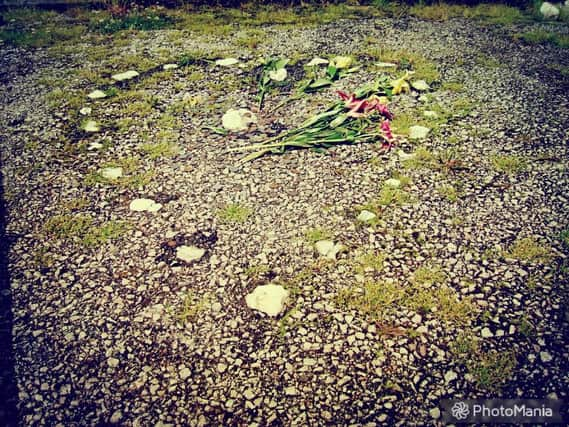Six rules of love from Scotland through time


1.The sex custom of ‘bundling’
This brilliant account of how islanders overcame the obstacles to courtship while living in the family home was included in Margaret Bennett’s Scottish Customs, From Cradle To Grave.
Originally taken from the 1933 version of the Scottish National Dictionary, it details the “primitive sex customs” among the “people of the black houses” on Lewis.
Advertisement
Hide AdAdvertisement
Hide AdThe account details the difficulties of “making love out of doors” during winter “on that bleak windswept coast”.
What came into play as a result was the custom of “bundling”.
The account talks of the young man going to the woman’s house with the female leaving her family in the living room to go to the “sleeping-room” to wait for her beau.
Here, there are no fire or candles “so for warmth, the girl goes to bed”.
"Once in bed, both her legs are inserted into one large stocking, which her mother ties above her knees.
"Then the young man goes into the sleeping-room, and lies beside her. It is called the ‘bundling’.”
2.Handfasting
Handfasting has become a popular ceremonial addition to modern weddings in Scotland, but in the past it was the union of choice for those wanting to test the true compatibility of their love.
Typically people would become bound in a contract where they would live together for a year and a day – with the couple free to leave each other – and find new spouses – if it didn’t work out.
Advertisement
Hide AdAdvertisement
Hide AdIf the union remained strong, it was often expected couples would go on and marry ‘in full’.
Handfasting was outlawed by the Kirk in 1575, but records show the ceremonies – when couples would have their hands bound together in a symbolic show of togetherness – were still being carried out in churches in Leith 30 years later.
If a child was born during the probation period and the union didn’t last, the child was treated as legitimate by the community.
3.The Penny Bridal
Once a popular form of marriage, the Penny Bridal was held at a large betrothal ceremony during which the man and woman each licked their right thumbs and stuck them together in a solemn vow of faith.
This account came from Meigle in Perthshire was also contained in Margaret Bennett’s book.
4.Hearts of Stone
The prehistoric stones of Orkney were where young people declared their love, usually after a New Year’s Day dance at a church in Stenness.
Colin Richards, in Building the Great Stones of the North, recorded how, if love blossomed, a young couple would walk to the Stones of Stenness – referred to as Temple of the Moon – where the girl would kneel down and pray to god Odin.
The couple would then walk three quarters of a mile to Ring of Brodgar – also known as Temple of the Sun – where the young man would also pray to the powerful figure in Norse mythology.
Advertisement
Hide AdAdvertisement
Hide AdHe said: “After that they both went to the Odin stone, where they stood on either side of it and held hands through the stone and made the Odin oath, which was considered binding.
“The two people that made the Odin Oath could be married to each other in church afterwards but they could not marry another,” Mr Richards added.
Babies were also sent to Odin Stone, which was destroyed in 1814 by the landowner, to prevent them from “shaking with palsy” in later life.
5.The Luckenbooth
These brooches were gifted by Scots as a love token or sometimes pinned to petticoats by the superstitious to ward off witches.
From the 1600s, the Luckenbooth was a popular treasure among ordinary people of Scotland with the double heart pins named after the row of buildings by St Giles’ Cathedral in Edinburgh where traders and artisans hammered out and hawked their wares.
Examples of inscriptions include “wrong not the heart whose joy thou art” and “my heart you have and yours I crave”.
But it wasn’t just Scots who loved the Luckenbooth. By the mid to late 18th century, the brooch design had worked its way into Native American decoration and became particularly favoured by the women of the Iroquois, a powerful confederacy of Native American tribes.
6.Scots women kept their own name after marriage
Dr Dauvit Horsbroch, of the Scots Language Centre, has written fascinating account of how Scots women traditionally kept their own surname after marriage.
Advertisement
Hide AdAdvertisement
Hide Ad"It was always the custom in Scotland – and still so in legal terms today – that a woman does not lose her family name as in England, but continued to be known after marriage by her own name,” he said.
So, for example, a Mary Cameron who married a John Stewart was still known in her neighbourhood as Mary Cameron. In legal documents she would be styled Mary Cameron or Stewart, the first name always being her own family name.
Dr Horsbroch said: “She could also be referred to as Mary Cameron Mrs Stewart. This custom reflects the strength of kith, kin and family in an older Scotland and the concept that a man often joined his wife’s kin group rather than simply the other way around.”
For Dr Horsbroch’s full article on Scots language of weddings, click here.
A message from the Editor:
Thank you for reading this article. We're more reliant on your support than ever as the shift in consumer habits brought about by Coronavirus impacts our advertisers.
If you haven't already, please consider supporting our trusted, fact-checked journalism by taking out a digital subscription.
Comments
Want to join the conversation? Please or to comment on this article.